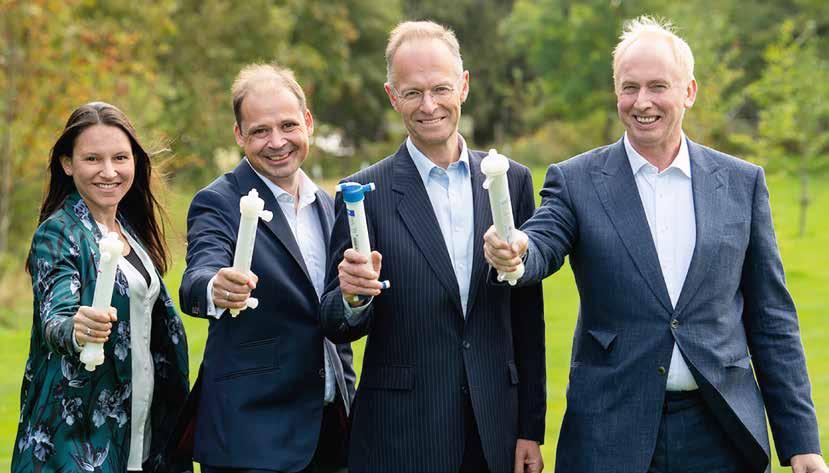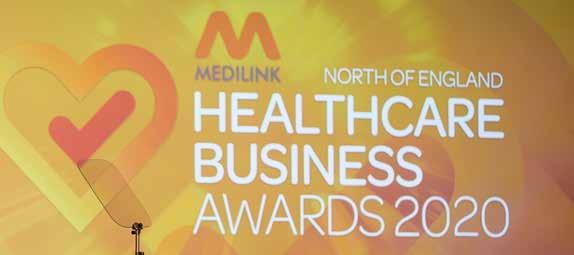
3 minute read
Why MDSAP is a driver of
Why MDSAP is a driver of medical device innovation
Contributed by David Jensen from MasterControl
The International Medical Device Regulators Forum (IMDRF) made 2019 a landmark year for the medical device industry. The organisation recently implemented the Medical Device Single Audit Program (MDSAP), which promises to move medical device innovation into the fast lane. With the amount of effort necessary to prepare submission materials, MDSAP will be a game-changer for medtech companies competing in the global arena.
What Is MDSAP? By definition, MDSAP allows a recognized audit organisation (AO) to conduct a single regulatory audit of a medical device manufacturer’s quality management system (QMS) based on the requirements of all regulatory authorities participating in the program. In simpler terms, “Some of the toughest regulators in the world agree on a standardised audit. If you are a participant, you will be good to go,” said Luis Jimenez, vice president of business development at Brandwood CKC. Completing a single audit instead of multiple separate audits is a huge advantage. The US Food and Drug Administration (FDA) agrees that MDSAP minimises the regulatory burden by promoting a greater alignment of regulatory approaches and technical requirements based on international standards. The MDSAP Audit A MDSAP audit typically lasts five days with two inspectors on-site. The FDA Group recommends becoming familiar with ISO 13485:2016 as MDSAP uses it as a framework. Also, approximately 30 per cent of the audit is nearly identical to a CE (European conformity) audit. The requirements apply to the medical device organisations, suppliers and third parties providing products or components. MDSAP uses a point-based nonconformity grading system instead of the traditional grading criteria that includes “significant finding,” “regular finding” or “significant opportunity for improvement.” Audit Stages The MDSAP audit begins with the AO conducting a two-stage initial audit, called the Initial Certification: Stage 1: Documentation Review – The application and relevant documentation are reviewed to assess the company’s preparedness for stage 2. Stage 2: On-Site Assessment – Once the AO is satisfied with your documentation and preparedness, it completes an on-site assessment to determine how the QMS complies with ISO 13485 and any other regulatory requirements of the IMDRF regulatory bodies. A MDSAP companion document includes details about the requirements and includes preparation tips. Documentation The initial audit for MDSAP requires a significant amount of documentation for each process and audit task. Surveillance Audits Within two years of the initial certification audit, the AO conducts surveillance audits to assess compliance with the MDSAP QMS requirements. These audits address changes to products or a QMS since the initial audit. During the fourth year, the AO conducts a recertification audit, which assess the ability of a QMS to continue meeting the MDSAP requirements. Countries Currently Participating in MDSAP
MDSAP is progressing rapidly. Several regulatory entities in key global markets have become full participants:
United States – Food and Drug Administration (FDA): Accepts MDSAP as a substitute for routine inspections. However, for cause, compliance follow-up, pre-approval or post-approval, and Electronic Product Radiation Control (EPRC) regulation inspections are still required. The FDA’s website has become the repository of documentation for the program. Canada – Health Canada: Recognizes MDSAP certificates as evidence of conformity to Medical Devices Regulations, sections 32(2)(f), 32(3)(j) and 32(4)(p). Canada is currently the only country where MDSAP is mandatory for companies selling devices in Canada. Australia – Therapeutic Goods Administration (TGA): A MDSAP audit, combined with Canadian, Japanese or FDA approval, can be used to obtain TGA registration, which includes the Australian Register of Therapeutic Goods (ARTG) of a medical device. Brazil – Agência Nacional de Vigilância Sanitária (ANVISA): Recognizes MDSAP as evidence of conformity to RDC No. 16/2013 requirements. Japan – Pharmaceuticals and Medical Devices Agency (PMDA): May perform an off-site instead of an on-site inspection or reduce documents for off-site inspection when companies submit a MDSAP report. MDSAP Is Poised for Expansion MDSAP is expected to continue growing as more countries become participants. “So far, both medical device companies and regulators are encouraged by the program, saying the audits are well planned, more consistent and make better use of inspectors’ time,” said Jimenez. MDSAP audits reduce or eliminate steps for country-specific requirements in IMDRF jurisdictions. Manufacturers who are ISO 13485 certified are already well on their way to compliance.









